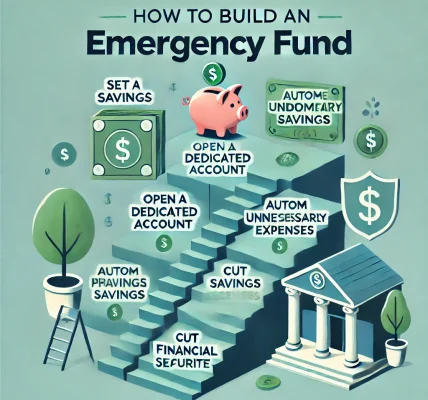Building long-term wealth is a goal for many, but not everyone understands one of the most powerful tools available—compound interest. Often referred to as the “eighth wonder of the world” by Albert Einstein, compound interest can exponentially grow your wealth over time. In this article, we’ll break down what compound interest is, how it works, and how you can use it to secure your financial future.
What is Compound Interest?
Compound interest is the process of earning interest on both your initial principal and the interest that accumulates over time. Unlike simple interest, which is calculated only on the principal amount, compound interest allows your money to grow at an accelerating rate.
Formula for Compound Interest
The mathematical formula for compound interest is:
Where:
- A = Final amount
- P = Principal amount (initial investment)
- r = Annual interest rate (in decimal form)
- n = Number of times interest is compounded per year
- t = Number of years the money is invested
How Compound Interest Works
To understand the power of compound interest, let’s look at an example:
Imagine you invest $1,000 at an annual interest rate of 5%, compounded annually for 30 years.
- After 10 years: $1,628
- After 20 years: $2,653
- After 30 years: $4,322
Even though you did not add more money, your initial $1,000 grew significantly due to compound interest. The longer you allow your money to compound, the more wealth you accumulate.
The Importance of Starting Early
One of the key factors in maximizing compound interest is time. The earlier you start investing, the more time your money has to grow.
Consider two investors:
- Investor A starts at age 25, investing $200 per month at a 7% annual return until age 65.
- Investor B starts at age 35, investing the same amount at the same return until age 65.
By retirement:
- Investor A will have approximately $528,000.
- Investor B will have approximately $245,000.
Starting 10 years earlier nearly doubles the wealth accumulated.
Strategies to Maximize Compound Interest
1. Invest in High-Yield Accounts
Choose accounts that offer higher interest rates and frequent compounding, such as:
- High-yield savings accounts
- Certificates of deposit (CDs)
- Money market accounts
- Retirement accounts (401(k), IRA)
2. Reinvest Earnings
Instead of withdrawing interest earnings, reinvest them to benefit from compounding.
3. Make Regular Contributions
Increase your wealth by making consistent contributions to your investments.
4. Minimize Withdrawals
Withdrawals disrupt the compounding process, so aim to leave your money invested for as long as possible.
5. Take Advantage of Tax-Advantaged Accounts
Use Roth IRAs, traditional IRAs, and 401(k)s to allow your investments to grow tax-free or tax-deferred.
Common Misconceptions About Compound Interest
1. “I Don’t Have Enough Money to Start”
Even small investments can grow significantly over time. Starting with as little as $50 per month can make a difference.
2. “I’ll Invest Later”
Delaying investments reduces the power of compounding. The best time to start is now.
3. “Higher Interest Rates Always Mean Better Returns”
While high-interest rates can be beneficial, riskier investments can lead to losses. Diversify wisely.
Real-Life Examples of Compound Interest in Action
1. Warren Buffett’s Investment Strategy
Warren Buffett, one of the world’s wealthiest investors, built his fortune by investing early and allowing compound interest to work its magic.
2. Retirement Planning Success
Individuals who consistently contribute to retirement accounts from an early age often retire comfortably, thanks to compounding.
Final Thoughts
Compound interest is a powerful financial tool that helps build long-term wealth. The key takeaways are:
- Start early
- Stay consistent
- Reinvest earnings
- Use high-interest, tax-advantaged accounts
By making informed financial decisions today, you can secure a prosperous future. Let compound interest work in your favor and watch your wealth grow over time!


